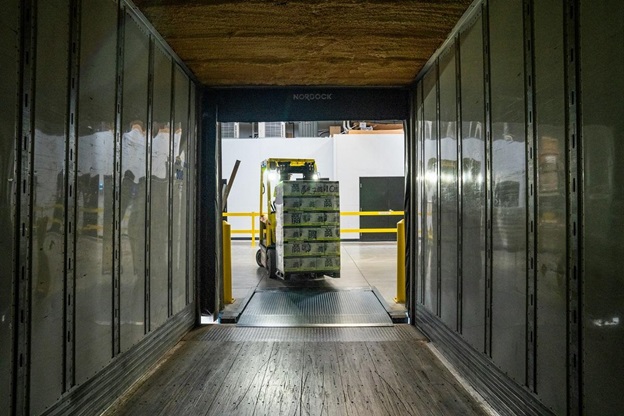In today’s competitive market, efficient warehouse management is crucial for businesses aiming to enhance productivity and reduce operational costs. Streamlining warehouse processes not only ensures timely delivery of products but also significantly reduces overheads. This article delves into effective strategies to improve warehouse efficiency and minimize costs, providing actionable insights for warehouse managers and business owners.
1. Optimize Layout and Space Utilization
A well-organized warehouse layout can drastically improve efficiency. Start by analyzing your current setup and identifying areas where space is underutilized. Implementing vertical storage solutions, such as shelving and racks, can maximize floor space. Additionally, design your layout to minimize travel time for picking and storing items. Grouping similar products together and placing high-demand items near shipping areas can reduce the time employees spend moving around the warehouse.
2. Implement Advanced Inventory Management Systems
Investing in an advanced inventory management system (IMS) can streamline warehouse operations. Modern IMS solutions offer real-time tracking, automated reordering, and accurate inventory forecasting. These features help in maintaining optimal stock levels, reducing the risk of overstocking or stockouts. Moreover, integrating IMS with other business systems, such as ERP and WMS, ensures seamless data flow and better decision-making. For example, find a forklift service that employs the most up-to-date tech they have available.
3. Adopt Automation Technologies
Automation is a game-changer in improving warehouse efficiency. Automated Guided Vehicles (AGVs), conveyor systems, and robotic picking solutions can significantly reduce manual labor and increase accuracy. Implementing warehouse management software (WMS) with automation capabilities allows for better coordination of tasks and resources. Automation not only speeds up processes but also minimizes human errors, leading to cost savings.
4. Enhance Employee Training and Engagement
Well-trained employees are more productive and less prone to errors. Regular training programs on new technologies, safety protocols, and efficient workflows can boost employee performance. Encouraging a culture of continuous improvement and involving employees in process optimization discussions can also enhance engagement and morale. Recognizing and rewarding high-performing employees fosters a motivated workforce, which translates into higher efficiency.
5. Utilize Data Analytics
Data analytics plays a vital role in identifying inefficiencies and areas for improvement. By analyzing data on inventory turnover, order accuracy, and picking times, you can pinpoint bottlenecks and implement corrective measures. Predictive analytics can help forecast demand patterns, allowing for better inventory planning and resource allocation. Utilizing dashboards and reporting tools provides real-time insights into warehouse performance, facilitating proactive decision-making.
6. Implement Lean Warehousing Principles
Lean warehousing focuses on eliminating waste and optimizing processes. Applying the 5S methodology (Sort, Set in order, Shine, Standardize, Sustain) helps maintain a clean and organized warehouse environment. Streamlining processes by eliminating non-value-added activities and reducing cycle times leads to increased efficiency. Continuous improvement through regular audits and feedback loops ensures sustained efficiency gains.
7. Optimize Order Picking Processes
Order picking is one of the most labor-intensive activities in a warehouse. Implementing efficient picking processes such as zone picking, batch picking, or wave picking, can significantly reduce picking times. Utilizing pick-to-light or voice-picking systems further enhances the process. Regularly reviewing and adjusting picking routes based on order patterns can also improve productivity.
8. Leverage Just-In-Time (JIT) Inventory
Adopting a Just-In-Time (JIT) inventory approach reduces the need for large storage areas and minimizes carrying costs. By aligning inventory levels closely with demand, you can reduce excess stock and free up capital. JIT requires a robust supply chain and reliable suppliers, but when implemented effectively, it leads to significant cost savings and increased efficiency.
9. Energy Efficiency Measures
Reducing energy consumption is an often overlooked aspect of warehouse cost reduction. Implementing energy-efficient lighting, such as LED bulbs, and optimizing HVAC systems can lead to substantial savings. Regular maintenance of equipment ensures they operate at peak efficiency, further reducing energy costs. Additionally, exploring renewable energy options, like solar panels, can contribute to long-term sustainability and cost reduction.
10. Continuous Improvement and Benchmarking
The quest for warehouse efficiency and cost reduction is ongoing. Regularly benchmarking your warehouse performance against industry standards and best practices helps identify areas for improvement. Implementing a culture of continuous improvement, where employees are encouraged to suggest and test new ideas, fosters innovation. Regularly reviewing and updating processes based on feedback and performance data ensures sustained efficiency gains.
Conclusion
Improving warehouse efficiency and reducing costs requires a multifaceted approach involving technology, process optimization, and employee engagement. By implementing the strategies outlined above, businesses can achieve significant operational improvements, leading to faster order fulfillment, reduced overheads, and a more competitive position in the market. Continuous monitoring and adaptation are key to maintaining high levels of efficiency in an ever-evolving business landscape.








Comments